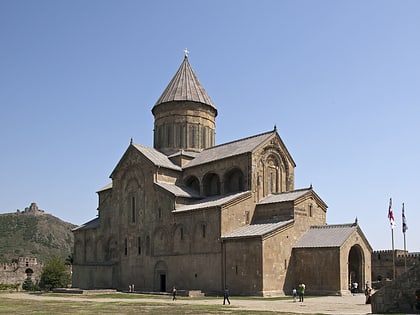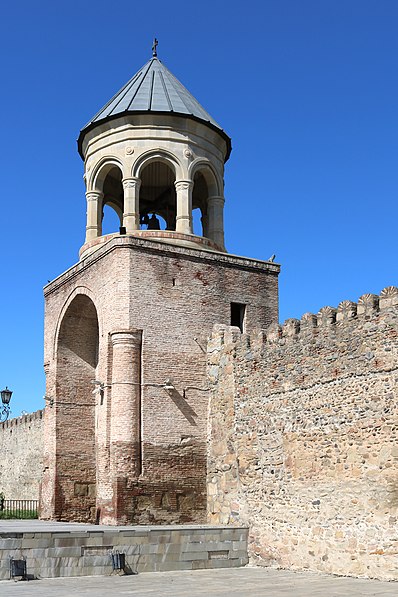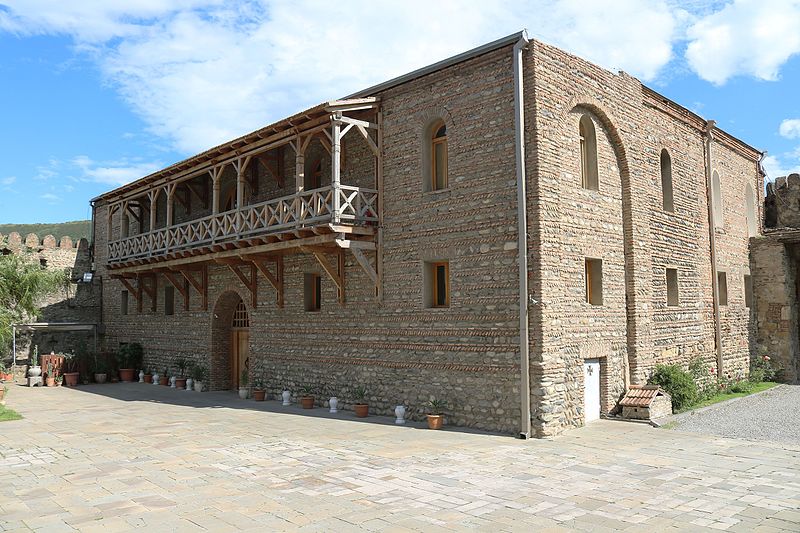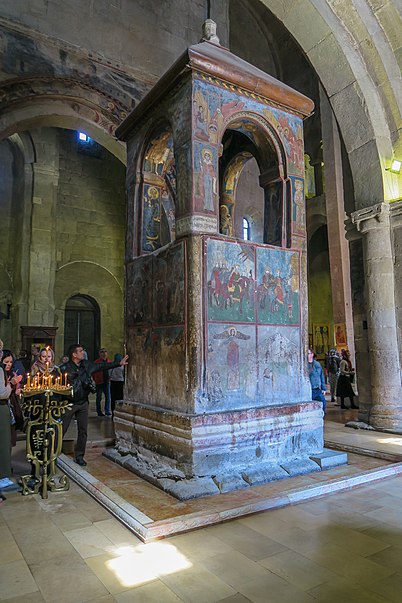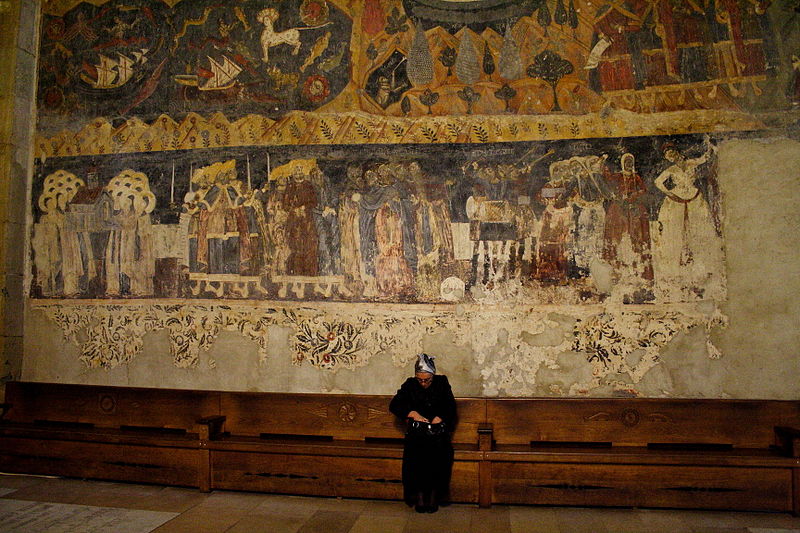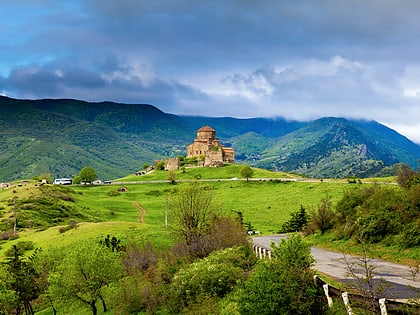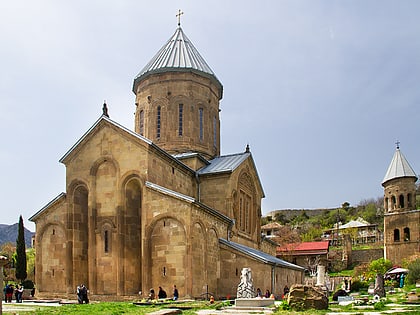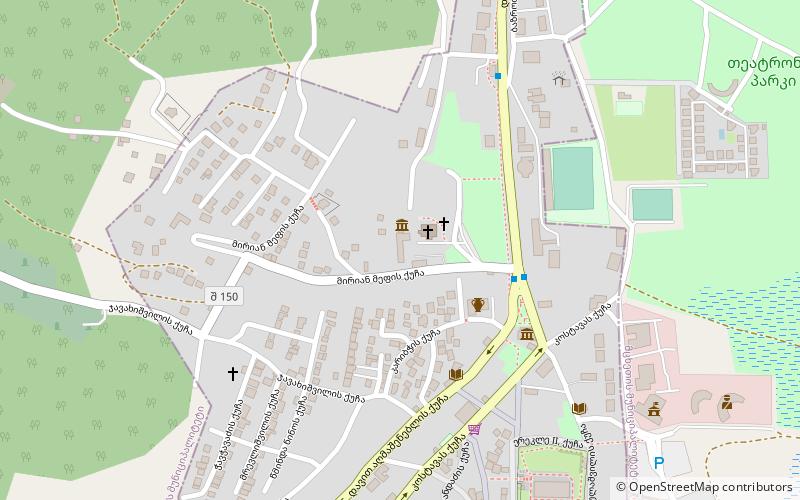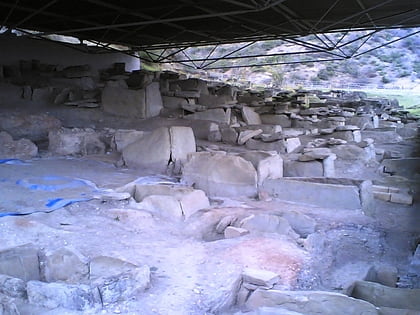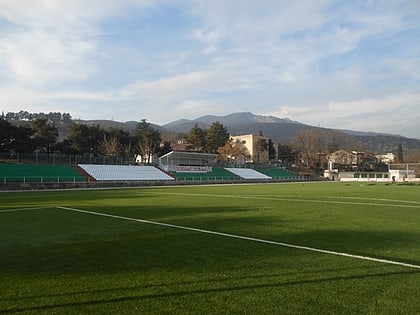Svetitskhoveli Cathedral, Mtskheta
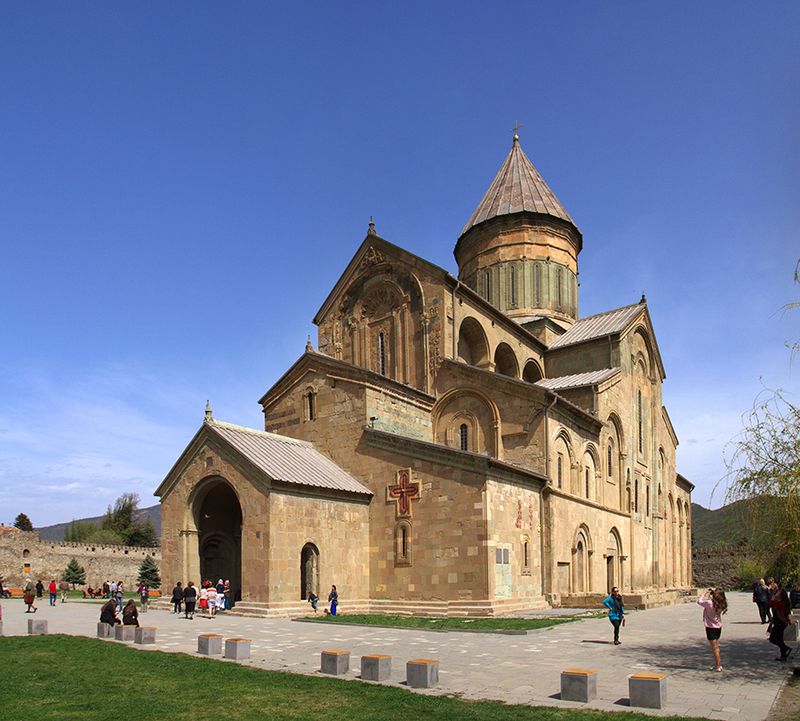
Facts and practical information
Nestled in the heart of the ancient city of Mtskheta, Georgia, Svetitskhoveli Cathedral stands as a monumental beacon of Georgian Christian Orthodoxy and a treasured architectural gem. This grandiose church, whose name translates to "the Living Pillar Cathedral," is a hallowed place of worship and a site of immense historical and spiritual significance.
Constructed in the early 11th century, Svetitskhoveli Cathedral is renowned for its impressive size and exquisite architecture, blending the traditional cross-dome style with intricate stone carvings and frescoes that adorn its walls. The cathedral is the second-largest church in Georgia and has been recognized as a UNESCO World Heritage Site, further underlining its importance as a cultural and religious landmark.
Legend has it that the cathedral was built over the burial site of Christ's mantle, which is said to have been brought to Mtskheta by a Jewish Rabbi named Elioz, who was present at the crucifixion. This sacred relic is believed to have miraculous powers and contributes to the cathedral's reputation as a major pilgrimage site.
The cathedral has withstood the test of time, surviving invasions, earthquakes, and numerous restorations, each adding layers to its storied past. The grandeur of Svetitskhoveli is not merely in its physical presence but also in its role as a witness to centuries of Georgian history, including the coronation of Georgian kings and the burial of many of their remains within its walls.
Svetitskhoveli Cathedral – popular in the area (distance from the attraction)
Nearby attractions include: Jvari Monastery, Samtavro Monastery, Tower of Mirian, Samtavro necropolis.
